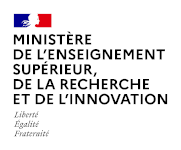Data Curation
The National Information Standards Organization (NISO) announces the publication of the Fall 2013 issue of Information Standards Quarterly (ISQ) with a special theme of Data Curation. Interest in the topic of data curation has increased greatly as many governments and funding organizations have mandated that publicly funded research must be made more openly available–including not only the results published in journal articles, but also the underlying data. As a result, much discussion and work is under way around the process and tools needed to ensure that data can be made accessible for reuse and preserved for the long-term.
The feature article by Colin L. Bird, Cerys Willoughby, Simon J. Coles, and Jeremy G. Frey discusses Data Curation Issues in the Chemical Sciences, specifically the extent to which chemists respect the importance of curation in their day-to-day activities in the laboratory and at their computers. The authors emphasize that an essential ingredient in the curation process is metadata, particularly at the time data and information are created, which they describe as `curation at source.`
Three `in practice` articles provide case studies for how data is curated in the European scholarly community in general and specifically in the fields of archeology and earth sciences. Jochen Schirrwagen and co-authors describe Data Curation in the OpenAIRE Scholarly Communication Infrastructure, the European Union initiative for an open access infrastructure for access to the research output of European funded projects and open access content from a network of institutional and disciplinary repositories. Ray Moore and Tim Evans discuss Preserving the Grey Literature Explosion: PDF/A and the Digital Archive in the Archaeology Data Service (ADS), with particular emphasis on the pros and cons of using the PDF Archival format as a standard for preservation. Esther Conway and her co-authors examine the challenges in Ensuring the Long Term Impact of Earth Science Data through Data Curation and Preservation, since much of earth sciences data occurs from natural phenomena and is not reproducible. They point out the societal benefits in preserving such data for use in areas such as disaster management, human health, sustainable energy resources, climate change, water quality and availability, ecosystem protection, and agriculture management.
(Excerpt of [NISO Publishes Data Curation Themed Issue of Information Standards Quarterly in Open Access->http://www.niso.org/news/pr
/view?item_key=dd448efd0f210acab8b1c6dce1efda94d0347aaf])






